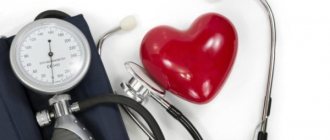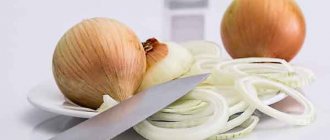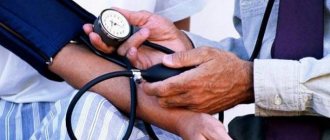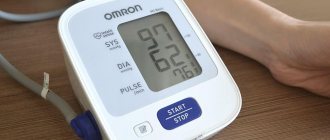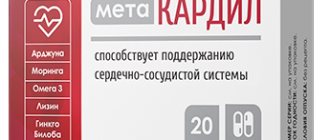- May 12, 2019
- Other states
- Marina Star
Increased intracranial pressure is an extremely unfavorable condition. It quite significantly worsens a person’s general well-being, and can also indicate a variety of pathologies that, in the absence of proper medical care, can lead to disability or even death. It is for this reason that doctors never stop looking for new ways to cope with this disease. The main criterion for the effectiveness of the methods used is the impact on the original cause that led to unwanted symptoms. In addition to the use of medications, there are a number of ways to reduce intracranial pressure at home using folk remedies.
Signs of ICP
Every person has ever experienced slight dizziness, blurred vision, periodically occurring sharp or, conversely, aching headache. However, the symptoms disappeared within a short period of time. But few people realize that it is precisely these signs that indicate an increase in ICP. An increased rate of intracranial pressure may be evidence of a disruption in the functioning or structure of brain tissue due to the formation of the following pathologies:
- hematomas;
- tumors;
- hydrocephalus;
- hemorrhages.
Neurologists are sounding the alarm about frequent cases of the development of this disease. In almost every fourth patient, the fluid pressure of the cerebrospinal tissue of the brain is 100-150 mm of water column higher than normal.
How to establish the fact of increased ICP:
- Immediately after waking up, pain occurs in the head and spreads through the entire skull.
- Pressing pain is not relieved by taking medications. At the same time, nausea and vomiting occur.
- The course of mental processes is disrupted, increased drowsiness and apathy appear.
- Blood pressure jumps, vision is impaired, dizziness and bradycardia are present.
Symptoms and treatment
Symptoms of intracranial pressure
Change in pupil reaction;- Swelling of the optic nerve;
- Problems with vision (peripheral vision is impaired first, and then central vision). Acuity decreases, diplopia occurs;
- Reduced hearing threshold;
- Dyspeptic syndrome consisting of nausea and vomiting;
- Severe headache that lasts for a long period of time, a feeling of constant fatigue and drowsiness;
- Pain when turning the head, as well as when sneezing and coughing;
- Sudden hyperhidrosis (production of a large amount of sweat), a sharp decrease in blood pressure;
- Irritability, nervousness, decreased ability to work;
- The occurrence of hematomas in the periorbital area;
- Pain in the cervical vertebra and spinal cord;
How to treat increased intracranial pressure?
It is necessary to understand that the condition in question is not an independent nosological unit, but a symptom of some disease that affects the human nervous system. Only after the pathology, the presence of which leads to an increase in intracranial pressure, has been identified, will it be possible to draw any conclusions. After all, it is reliably known that treatment of intracranial pressure (increased), equally as treatment of any other somatic pathology, can only be effective if its root cause is determined for the purpose of further elimination, and nothing else.
It is in order to correctly identify the root cause of the pathology that it is necessary not only to conduct a number of laboratory and instrumental studies, but also to consult a competent specialist who can interpret the results obtained, compare them with indicators of the objective condition, and then draw appropriate conclusions and select the correct treatment that will will relieve the symptoms discussed above.
If you notice signs of increased intracranial pressure, do not delay your visit to the doctor, this will need to be done as soon as possible, since what matters here is when exactly the necessary treatment will be prescribed.
The most experienced and competent neurologist in Tushino conducts an appointment in our clinic. Hurry up to sign up, because if treatment is started on time, it will be much easier to get rid of the pathological condition before the disease manifests itself and does not lead to undesirable consequences.
Get advice on visiting a neurologist. Consultation on the service does not oblige you to anything.
Causes
One of the pathogenetic mechanisms that affects intracranial pressure is called by medical workers a change in brain size that occurs due to edema. The etiological factors contributing to the development of this condition include the following diseases:
- the appearance of neoplasms or inflammation in neurotissues;
- intoxication of the body, developing as a result of poisoning with toxic substances;
- stroke of hemorrhagic or ischemic nature;
- brain injury;
- hydrocephalus;
- hematomas of various origins.
In newborn children, in the vast majority of cases, the cause of pathology is various injuries received during childbirth.
Causes of intracranial pressure
Taking into account the fact that intracranial pressure is formed by the influx of cerebrospinal fluid (CSF) into the ventricles of the brain (special cavities where this substance is located), any violations of this indicator are in one way or another connected precisely with the redistribution of this fluid and nothing else. In turn, there are many reasons contributing to the disruption of the outflow or inflow of cerebrospinal fluid:
- Disturbance of metabolic processes when cerebrospinal fluid is not absorbed into the blood;
- Spasm of the muscular wall of blood vessels, preventing normal vascular circulation;
- An increase in the volume of circulating blood, which leads to an increase in the amount of cerebrospinal fluid;
- Insufficient oxygen supply to the brain;
- Meningitis;
- Hemorrhagic cerebral infarction;
- Inflammatory processes occurring in the central nervous system;
- Neoplasms of various types;
- Intoxication;
- Migraine.
How to relieve intracranial pressure at home
There are often cases when there is an urgent need to reduce high ICP, and pills are not needed for this. Even in such situations, alternative medicine offers methods to treat intracranial pressure with folk remedies. The main feature of the recommendations given is that most of them can be applied not only to adults, but also to children.
The actions of all kinds of tinctures, potions, baths, compresses and decoctions are aimed at relieving painful symptoms and reducing the quantitative content of cerebrospinal fluid in the skull. Medicinal plants have long been used to achieve this effect.
So, how to get rid of intracranial pressure without drugs using folk remedies? Treatment of the symptoms of the disease is possible with the help of herbal remedies obtained by processing the generative and vegetative organs of plants such as garlic, rose hips, stevia, meadow clover, thistle, hawthorn, yarrow, calendula, valerian, flax seeds, lavender. In addition, from these raw materials it is possible to easily obtain alcohol tinctures, which are stored for quite a long period of time. You should keep them in your first aid kit just in case. The help provided by herbal remedies boils down to the fact that headaches are reduced and blood circulation in the brain is normalized.
In addition to treatment with herbal remedies, there are other ways to relieve intracranial pressure at home. It is worth resorting to simple physiotherapeutic methods, which include massage, rubbing lavender oil into the temple area at night, wiping the ears with cold water. When used in combination, all these measures are especially effective. Below are recipes for decoctions and tinctures aimed at reducing intracranial pressure.
Mulberry decoction
The following is the recipe for preparing and using this herbal medicine:
- Mulberry branches must be cut into pieces with pruning shears; you can also use wire cutters. Both fresh and dry branches are suitable. The size of the pieces should reach 2 cm.
- Throw 100 g of raw material into a liter of cold water, bring it to a boil and cook over low heat for 20 minutes.
- The resulting composition is removed from the heat, carefully wrapped and infused for about one hour.
- Drink the drug three times a day, half an hour before meals, one glass.
This decoction is taken until the condition improves. The course of therapy may last a month, two or even three. The drug is considered harmless; it does not cause any damage to the body even with long-term treatment.
There is another recipe for how to lower intracranial pressure at home using mulberry tea. To do this, pour 200 g of fruits with one liter of boiling water, and then add 200 g of honey. Drink one glass of this tea in the morning on an empty stomach. Therapy is carried out until positive changes are noted in the general condition of the body.
External remedies to eliminate signs of ICP
Intracranial pressure in adult patients is helped not only by oral formulations, but also by external agents in the form of ointments, baths and compresses. The following will list the most popular recipes for carrying out such treatment at home.
Honey and pollen
A method of treating intracranial hypertension using head massage is used for a month or two. To do this, honey and pollen are mixed in a 1:2 ratio, and then left to infuse for three days in a dark place. The finished mass should be applied to the fingers and massaged into the area of the temples, back of the head, neck, and bridge of the nose. You can also include the scalp in the massage. After the procedure, you need to wrap your head in a scarf and lie down to rest.
Warm mint compress
Mint leaves need to be crushed, take one glass of raw materials and boil in a liter of water for 15-20 minutes. In the solution that has cooled to a warm state, moisten a cotton towel and apply it to the head until the fabric becomes cool. The procedure must be repeated until the composition is finished.
Linden baths
You need to prepare linden blossom in the amount of two glasses, brew the raw material with two liters of boiling water and let it rest for 40-50 minutes. Next, prepare a hot, but not scalding bath, pour the resulting decoction into it and take water procedures for a quarter of an hour. The person should be in the bathtub in a semi-sitting position on a slight elevation (you can use a pillow or a chair). The legs should be lower than the level of the pelvis to improve the drainage of excess fluid from the skull.
Mustard oil
Heated vegetable oil is combined with dry mustard powder in equal parts, after which the prepared mixture is massaged onto the feet until a feeling of spreading warmth is felt. Those with sensitive skin can take a soda foot bath after a massage with mustard to prevent irritation. Dilute 2 tbsp in 2 liters of water. l. baking soda. After the procedure, the feet are blotted with a towel and go to bed.
Camphor oil
Medical alcohol in a 70% concentration is mixed with camphor oil, and then the composition is rubbed into the scalp, including the scalp. For the best effect with high blood pressure, you need to wrap your head with a cap and cover it with warm material. The procedure is carried out before going to bed so that the composition is effective throughout the night, and in the morning you wash your hair with shampoo.
After just a week of such therapeutic wraps, your health will improve and your headaches will subside. If you do not want to prepare special compositions, you can wipe the ear shells with a cotton swab moistened with cool water when signs of intracranial pressure next develop. Wiping can be done every day, but no longer than 7-8 minutes at a time.
No ads 3
Infusion of garlic and lemon
Another folk remedy for treating intracranial pressure is an infusion of garlic and lemon. To prepare a home remedy for high intracranial pressure, you will need the following ingredients:
- 5 heads of garlic;
- 10 ripe large lemons;
- 1 kg of May honey.
To prepare a healing potion, you must use the following recommendations:
- The garlic is peeled and the lemon is cut into small cubes.
- All ingredients are passed through a meat grinder. To obtain a homogeneous mass, you need to grind them several times.
- The resulting mass is mixed with honey, poured into a 2-liter bottle with a lid, closed tightly, and placed in a warm and dark place where light does not penetrate at all.
- The mixture should infuse for at least a week.
- As soon as the product has infused, shake it well, and then wrap it in a thick, impermeable cloth and put it in the refrigerator.
This drug is taken one teaspoon three to four times a day. The course of treatment is one month. After completing the therapeutic course, it makes sense to take a break. It is necessary to pay attention to the fact that the medicine is constantly stored in the refrigerator. It is strictly forbidden to remove the fabric from it, since exposure to direct sunlight can start the fermentation process, and the mixture will become unusable.
Use of cranberries in treatment
If intracranial hypertension is a concern, it is necessary to use components with diuretic properties in home treatment to improve the outflow of fluid from the head. One of these components is cranberry. It lowers cholesterol levels in the blood, clears capillaries from the accumulation of atherosclerotic plaques, and normalizes the outflow of excess fluid from the body. In addition, the sour berry eliminates inflammatory processes, increases the body's resistance to infections and removes free radicals.
To eliminate the symptoms of ICP, you can use cranberries in several ways:
- Morse. 200 g of berries are washed, kneaded with a mortar and the remaining cake is poured into 600 ml of water; the juice is first squeezed out of the berries. The mixture is boiled for 1–2 minutes, then filtered, 60 g of granulated sugar is poured into it and the berry juice is poured in. The finished fruit drink is mixed and drunk throughout the day, and the next morning a fresh portion of the drink is prepared.
- Kissel. Take 200 g of cranberries, pass them through a blender or simply crush them in a mortar, then add 1 liter of boiling water and add sugar to taste. The composition should rest for a quarter of an hour, after which it is placed on low heat, having previously prepared the starch. For this, 1.5 tbsp. l. starch is diluted with 200 ml of cold water and brought to a homogeneous consistency. When the cranberry mixture has boiled, you need to remove the resulting foam from it and pour in the starch, then cook until thickened. The finished jelly should be drunk the day before, without leaving it in the refrigerator.
- Compote. 400 g of cranberries are boiled in 2.5 liters of water for a quarter of an hour, after which the drink is ready for consumption. If desired, you can diversify the taste with currants, raspberries, cherries and other berries.
It is useful for patients with signs of intracranial and arterial hypertension to eat cranberries even in their pure form, with the addition of a spoonful of honey
Recipes with cranberries for the treatment of intracranial pressure are very popular, since many have heard about the healing properties of the berry. This is not only a tasty treat, but also a way to effectively eliminate the symptoms of ICP thanks to the diuretic and anti-inflammatory properties of cranberries.
Infusion of plantain leaves
In folk medicine, fresh plantain leaves have been used for a long time for the aseptic treatment of boils, wounds and abscesses, but few know about the property of this plant to reduce the level of ICP. The hypotensive properties of plantain are due to the fact that this plant contains a huge amount of phytoncides, tannins, polysaccharides, organic acids, as well as carotenoids, flavonoids, vitamins K, C and many other biochemical active substances. Plantain helps hypertensive patients not only when ICP increases, but also with vascular and heart diseases. It also has diuretic properties and reduces the burden of edema.
Typically, plantain infusion is prepared from the leaves of the plant. In order to obtain a sufficiently effective herbal medicine, use the following recipe:
- crushed plantain leaves (3-4 tablespoons) are mixed with not very hot water (half a liter);
- the resulting mixture is infused for a day;
- To achieve the required clinical effect, you should use the infusion several times a day, one or two spoons.
Infusion of lavender flowers
An infusion of lavender flowers is a folk remedy for treating intracranial pressure in adults. It helps to quickly get rid of the symptoms of an unpleasant illness. A number of simple steps must be performed to prepare a preparation from this plant:
- Dried lavender petals (300 g) are poured with boiling water, then boiled for 2 minutes.
- The resulting mixture is infused for at least half an hour.
- The decoction is drunk after lunch for one month. After a month, a two-week break is taken, and then treatment continues for another 30 days.
To ensure a more effective result, in addition to taking this drug orally, they should rub the patient’s forehead at night.
Another good recipe:
- the lavender herb is thoroughly crushed, then poured with an equivalent amount of olive oil;
- the product is put away in a dark place for twenty days, after which it can be considered infused;
- the infusion is filtered and mixed in equal parts with Kalanchoe juice;
- the resulting product is taken orally, one tablespoon at a time.
In addition to decoctions and infusions, there are other methods to lower intracranial pressure at home. These include the use of compresses, inhalations and baths.
Compositions for oral administration
Traditionally, folk remedies for cranial hypertension are used in the form of decoctions and infusions for oral administration. The components of the recipes must have diuretic, anti-inflammatory and strengthening properties to facilitate the outflow of fluid from the tissues. The following is a list of the most common and effective remedies that help relieve headaches during exacerbations of ICP and significantly improve well-being:
- A decoction of mulberry branches. So, 20 g of dried raw materials are poured with a liter of water, put on fire and boiled for 30 minutes. The resulting composition must be filtered and taken orally, 200 ml before each meal. This will relieve headaches even of severe intensity.
- Lemon-garlic composition. You need to take two heads of root vegetables and two lemons, grind the ingredients in a blender until smooth and add 2 liters of water (you can use warm water, but not boiling water). Leave for 24 hours, then consume 30 ml in the evenings before going to bed.
- Clover tincture. The plant heads are placed in a glass container, filled with vodka or diluted alcohol. The product should be infused for at least two weeks in a dark place, after which it is drunk diluted with water, adding 10 ml of tincture per glass.
- Lavender oil. Crushed lavender flowers are poured with olive oil and infused for at least three weeks. The strained mixture is diluted with Kalanchoe juice and 20–30 ml is drunk daily.
- Lemon juice with honey. You need to take one lemon fruit, squeeze all the juice out of it, add 50 ml of honey and 100 ml of water. The resulting mixture should be drunk in several doses over 60 minutes, preferably before bed. If you cannot fall asleep after consuming the composition, you need to reschedule the dose the next morning - lemon juice contains a lot of vitamin C, which can cause agitation and insomnia.
- Plantain. Dried plantain leaves in an amount of 50–60 g are boiled for a quarter of an hour in half a liter of water, after which the composition is cooled and filtered. The decoction should be consumed 50 ml four times a day. The remedy can treat ICP even in children, giving the baby three tsp. twice a day.
- Birch decoction. To prepare the product, you can take buds or leaves of the tree. Pour two tablespoons of raw material into a liter of water, bring to a boil and keep on fire for at least 20 minutes. Next, the composition should stand under the lid for 60 minutes, it is filtered and taken orally, ½ cup four times a day. Use the composition when you feel worse and have headaches.
- Nettle with string. The ingredients are prepared in equal quantities, crushed, then 3 tablespoons are separated from the mass and 1 liter of boiling water is brewed. The composition is placed in a water bath, where it is kept for 15–20 minutes, after which it is cooled and filtered. You need to drink 40 ml of the decoction before each meal.
Before using herbal components for treatment, you need to make sure that they are well tolerated by the body.
In parallel with ingestion of medicinal compounds, a patient with intracranial pressure needs to eat grapes daily. It is better to choose sweet varieties of fruit - the product nourishes brain tissue, improves oxygen supply, and removes excess fluid from the body. Every day you need to eat half a kilogram of grapes for a noticeable hypotensive effect.
No ads 1
Compresses
Often, increased intracranial pressure occurs due to spasms of cerebral vessels. In order to expand them, normalize blood circulation and relieve headaches, traditional medicine recommends using compresses, but this must be done in a certain way:
- Pure alcohol is mixed with camphor oil in a one to one ratio. In this case, both products are taken in 45-50 ml.
- The resulting composition must be applied to the patient’s head with smooth movements.
- To provide warmth, the patient's head must be covered with a rubber cap. Another option is a plastic bag, and a wool scarf or a very warm scarf is tied over it.
- The procedure should be performed before bed, and in the morning you should wash your hair thoroughly.
To achieve results, this method should be repeated at least ten times in a row.
Symptoms and treatment of ICP
In a good way, if a person experiences any kind of malaise, he or she should consult a doctor. Instead, we self-diagnose and self-medicate on a daily basis. The real world is designed in such a way that people don’t have time to sit in hospital queues. It is easier to find information on the Internet and carry out therapeutic measures to improve health here and now. The main symptoms of ICP are:
- back pain syndrome,
- headache,
- blurred vision,
- vomit,
- nausea,
- swelling,
- increased fatigue,
- lethargy,
- irritability.
If you feel an increase in intracranial pressure, do not rush to self-medicate. Of course, ICP is a fairly common phenomenon among people, but still very dangerous. It is better to seek advice from a professional.
Inhalation with bay leaf
Bay leaf is another remedy to get rid of intracranial pressure. The recipe gets good reviews. Currently, quite a few recipes are known with this plant, but the following has shown the greatest effectiveness:
- 3-4 leaves are steamed with a glass of boiling water and left for 24 hours.
- Laurel tea is drunk before meals, about half an hour before.
- The course of treatment is as follows: drink half a glass twice a day for 14 days. After completing traditional therapy, take a one-month break.
Now, as for inhalations: this method allows you to eliminate even very severe headaches in the shortest possible time. For this purpose, thirty bay leaves are brewed in one liter of boiling water and the steam is inhaled for half an hour. This procedure is carried out three times a day. It is recommended to be treated with this method for several weeks. If the entire therapeutic course is carried out as expected, the result will exceed all expectations.
Bay leaf for blood pressure
Laurel is a plant whose leaves contain a lot of vitamins, essential oils, phytoncides, tannins, organic acids and other medicinal components. A decoction based on bay leaves is used at home to remove excess fluid from the body and relieve inflammation.
Healing properties of the plant:
How to measure intracranial pressure in a child?
- bactericidal – stops the proliferation of pathogenic microbes;
- hypotensive – eliminates signs of intracranial and arterial hypertension;
- cleansing – helps remove waste, toxins and salts from the body;
- diuretic and anti-inflammatory – removes excess fluid from tissues, reduces the level of inflammation;
- stimulating – metabolic processes are activated;
- strengthening and antispasmodic - increases the body's resistance, relieves vascular spasms, increases their tone.
To prepare a composition based on bay leaves for intracranial pressure, you need to infuse 3-4 leaves in a glass of boiling water for at least 24 hours. It is recommended to drink half a glass of the prepared tea twice a day, the course of treatment is two weeks, after which a month's break is taken.
No ads 2
Linden for high blood pressure
Linden flowers have a wide variety of properties. They are used in folk medicine, as well as in the manufacture of drugs from natural ingredients. This unique remedy also had a positive effect on increasing ICP. Moreover, in this situation, inflorescences, buds, bark, leaves and honey from linden nectar are used. Due to its calming effect, linden makes it possible to reduce high blood pressure.
To achieve maximum results, it is recommended to take a decoction prepared from flowers, pre-flowers, bark and leaves of the plant. All ingredients must be taken in equal parts, and pour boiling water in a ratio of 1 to 5. All this is infused for 3 hours, filtered and taken once a day in a glass for two weeks.
It is not recommended to take the medicinal mixture for persons driving vehicles or performing work involving interaction with the smallest parts.
Prevention
There are several preventive rules on how to get rid of intracranial pressure:
- exercises (regularity is important);
- mandatory adherence to the daily routine;
- undergoing sanatorium-resort treatment;
- timely treatment of the underlying disease;
- following a specially designed diet;
- getting rid of bad habits;
- avoiding overheating.
Also, to prevent ICP, it is recommended to use a collection of motherwort and lemon balm: 200 mg of the raw material is poured into two liters of boiling water. All this should brew for about a day. Then the mixture is filtered and taken three times a day, one glass.
conclusions
To normalize intracranial pressure, treatment with folk remedies can only be used in combination with traditional medicine. No one excludes the effectiveness of herbal remedies. However, not in all cases their healing properties are confirmed at the biochemical level.
When treating cerebral hypertension, especially if it manifests itself in adolescence, it is better to use only traditional methods, since some changes occur in the bones of the skull during this period. A persistently elevated blood pressure level may occur due to the healing of post-traumatic damage to the brain structure. You should also understand that in the presence of stable hypertension, getting rid of intracranial pressure at home forever, sadly, is very difficult. Although this can be difficult to do even during traditional treatment. Each hypertensive crisis worsens the condition of the human nervous and cardiovascular system many times over. It follows that round-the-clock monitoring of this indicator and taking antihypertensive drugs is necessary.



